One of the easiest ways to slow down the rate at which deciduous bonsai dry out is to apply a top dressing to the surface of the soil.
A top dressing is a thin layer of soil or related material that is applied with the aim of retaining moisture and/or improving the look of the soil.
There are many recipes for creating top dressings, but most share the following characteristics.
Top dressing particle size is usually small as small particle mixes preserve more moisture than large particle mixes. The particles themselves are usually heavier than water as particles that float can easily wash away during watering. Finally, top dressings often contain organic components like moss that retain moisture and encourage roots to grow near the surface of the soil.
This last point may come as a surprise to growers who avoid using organic ingredients in their mixes. Although I don’t typically use moss or bark in my soil, I frequently apply it as a top dressing.
The most common approach is to apply a layer of white sphagnum moss (aka “New Zealand moss” or “orchid moss”) to the surface of the soil. Depending on how much moisture you want to preserve, you can apply a thin layer or a thick layer.
Recently, I’ve been using a combination of moss and small soil particles as a top dressing. Here’s what the process looks like.
After noticing that the soil near the surface of the Chinese quince below had washed away, I wanted to apply a top dressing that would stay put. I began by applying a layer of moist white sphagnum moss.
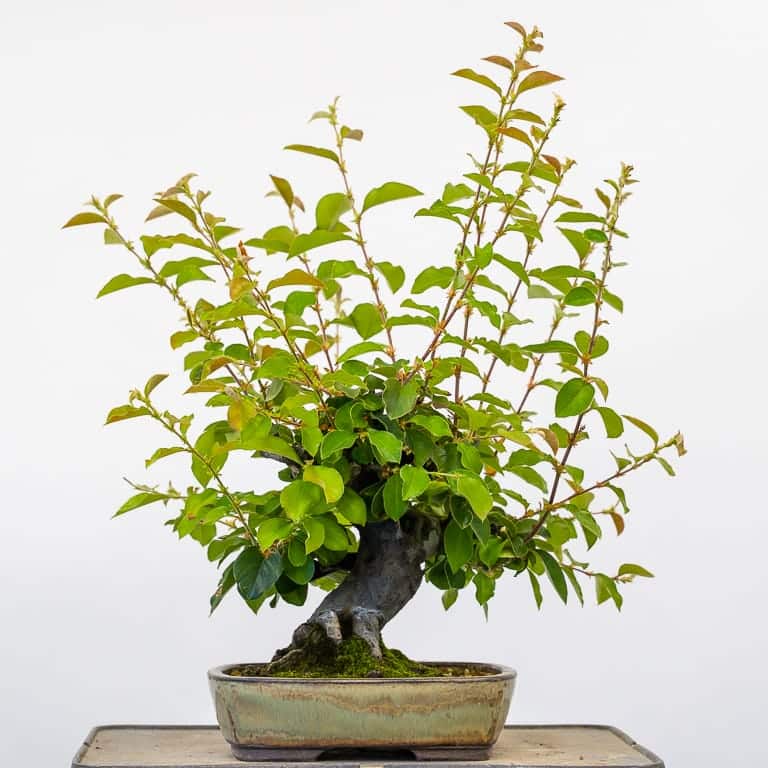
Chinese quince – the top 1/4″ of soil had washed away
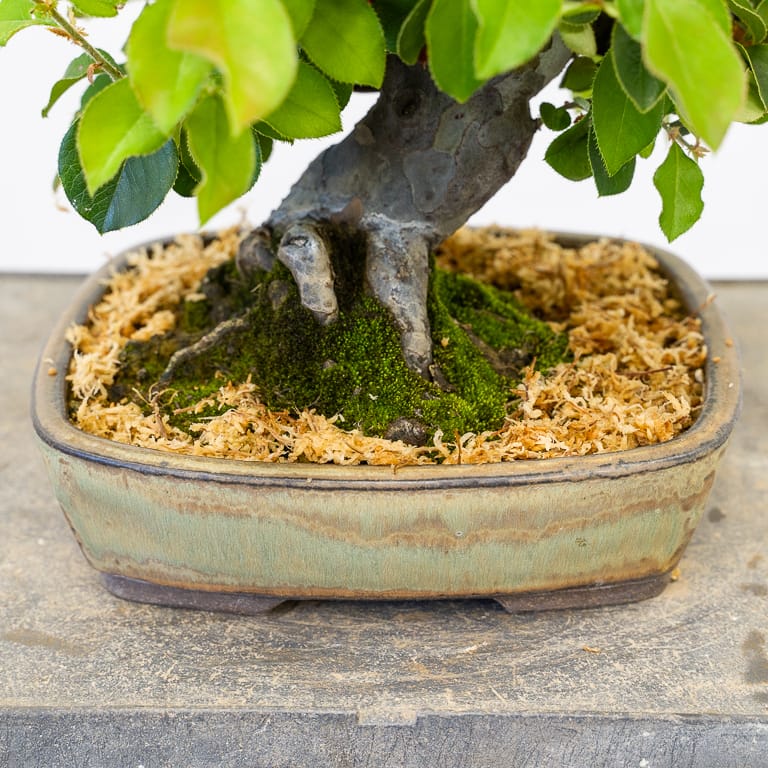
After applying a layer of white sphagnum moss
Next, I sprinkled fine akadama particles over the moss and gently mixed the two together with a chopstick.
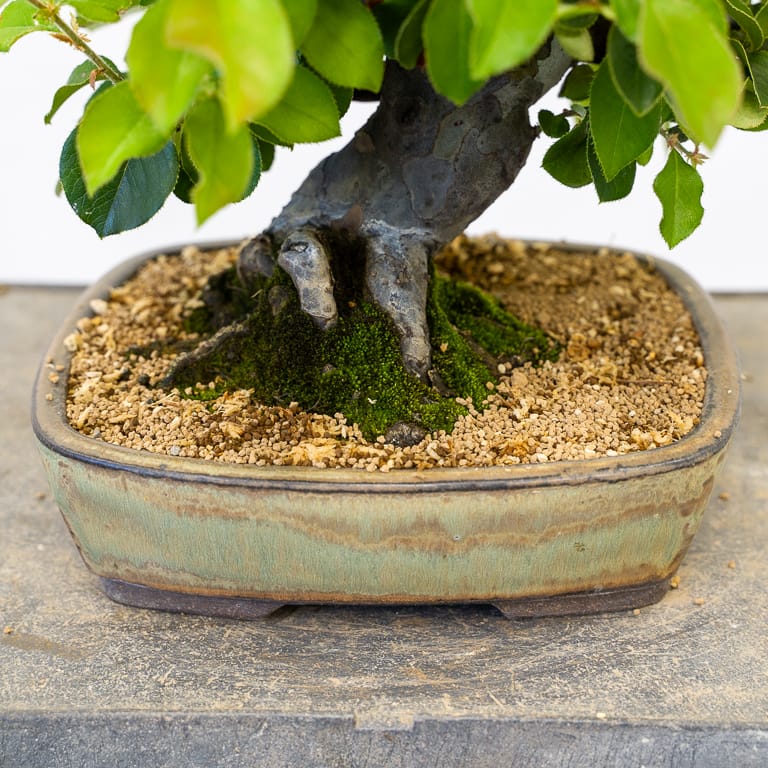
After sprinkling fine akadama particles over the moss
Next, I took some dry sphagnum moss and ran it through a sieve. Using these finer particles, I sprinkled a thin layer over the moss and akadama.
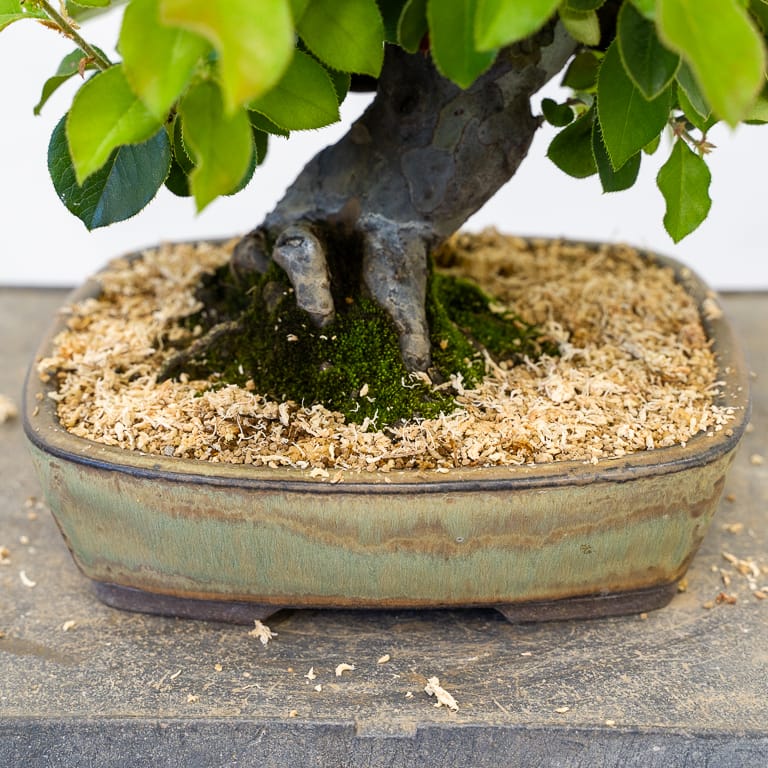
Fine layer of sphagnum moss on top
I carefully watered the top dressing and then patted it into place just below the lip of the pot.
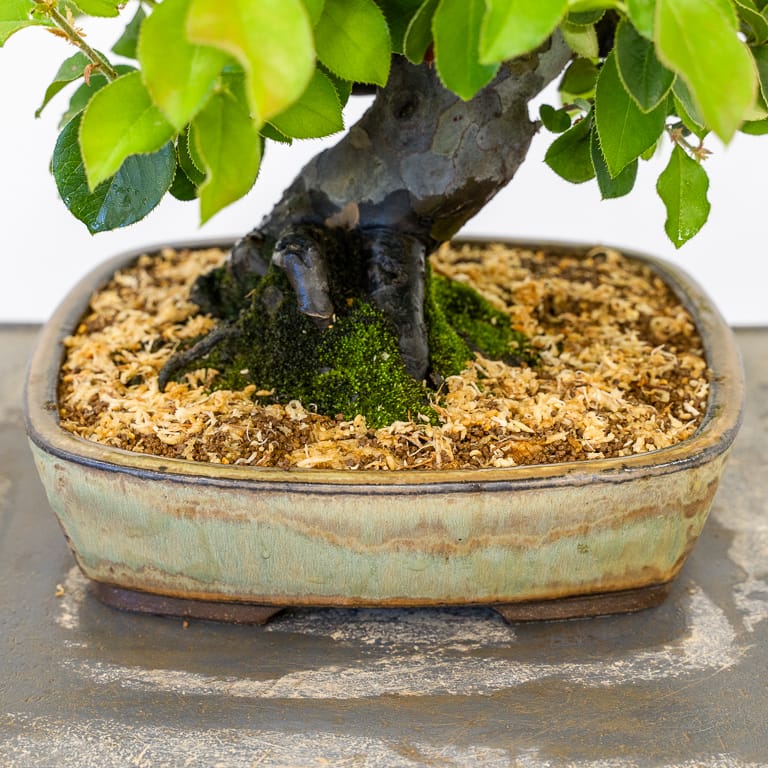
After watering in the new top dressing
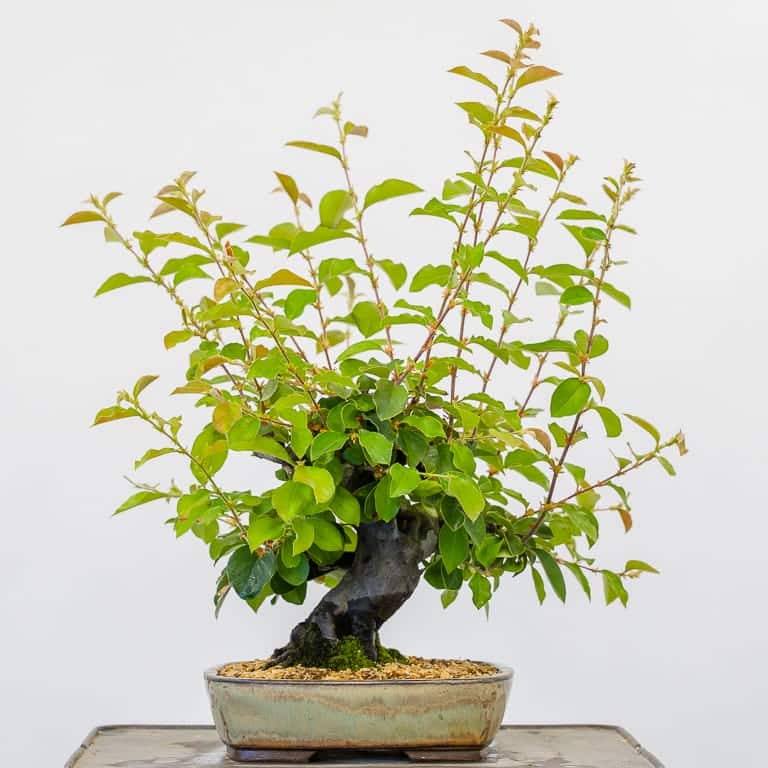
Top dressing complete
By adding this top dressing, I effectively made the pot 1/4″ deeper which will preserve moisture and provide room for roots to grow near the surface.
If the top dressing stays wet enough, I can expect moss to start growing. This happened with a Korean hornbeam in my garden that was repotted earlier this year.
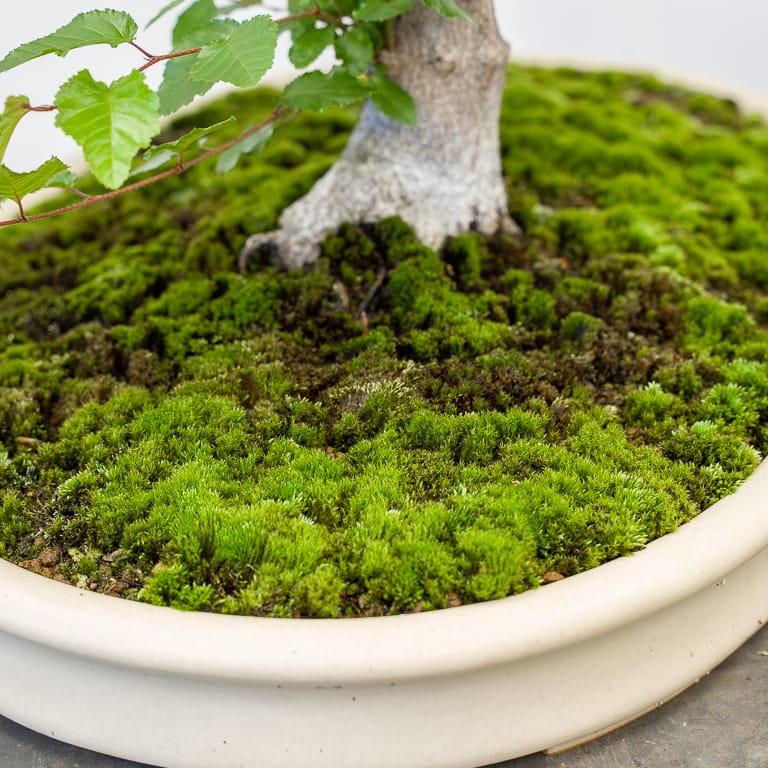
Volunteer moss
Healthy green moss is a good sign that the surface of the soil is just moist enough to keep surface roots healthy. If, however, the surface stays too wet, liverworts will appear.
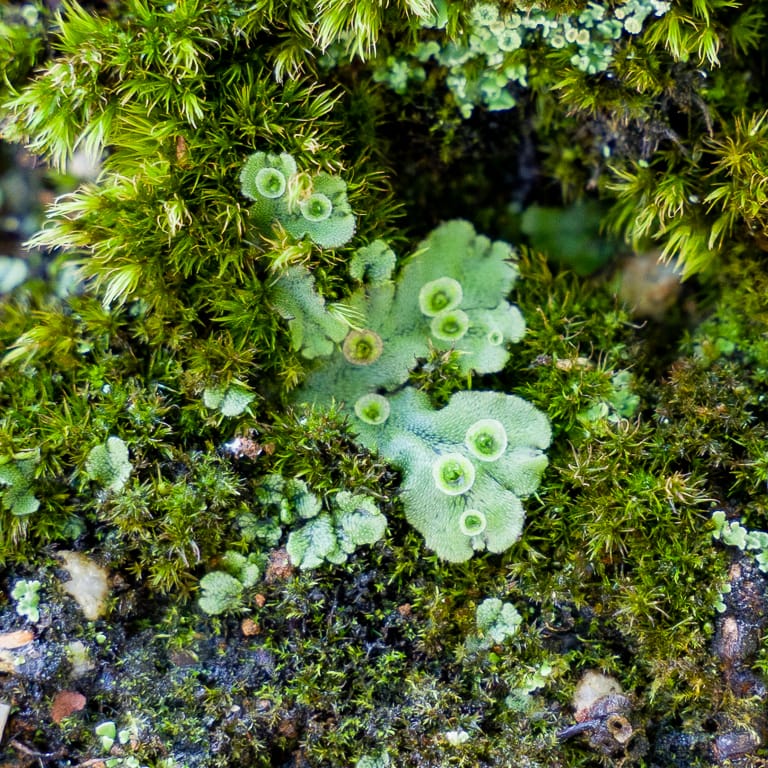
Liverwort – the surface of the soil is staying too wet
Over the last few years, I’ve seen moss develop on a surprising number of trees in both shady and sunny spots in the garden. The moss on the hornbeam above grew under 30% shade cloth, and the silver moss below grew on the surface of a pine that receives full sun.
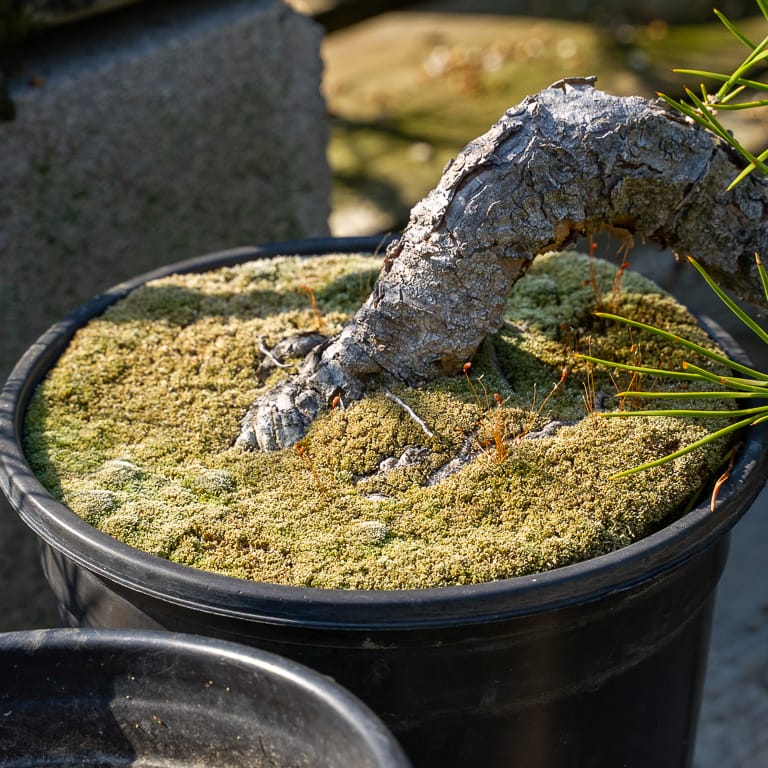
Volunteer silver moss
In an effort to encourage moss to develop more consistently, I sometimes mix dried moss into the sphagnum-based mixture applied as a top dressing.
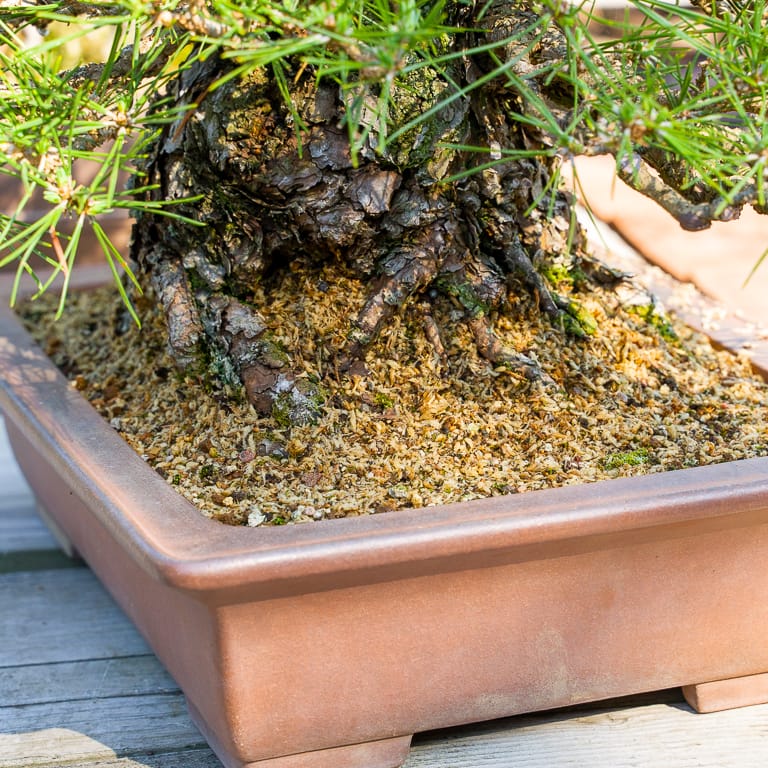
Sphagnum moss mixed with green and silver mosses
These moss mixtures can show signs of growth within a matter of weeks when conditions are right, but even if they don’t grow, the white sphagnum moss does a great job of preserving moisture near the surface.
Up next: a top dressing for azaleas – mountain moss.
Podcast Interview Published Last Month
I recently sat down with The Iowa Idea Podcast for a conversation about bonsai with host Matt Arnold. Matt has long had an interest in the pursuit and has recently started some trees of his own. We cover a variety of topics ranging from basic bonsai care to how people teach and learn bonsai.
You can listen to the episode (#20) at the Iowa Idea Podcast website or download it to your favorite podcast player.
Subscribe to Bonsai Tonight
New Posts Delivered Every Tuesday and Friday
Tom Regelski says
Please, more info on the BASICS of encouraging moss to grow.
Jonas Dupuich says
Hi Tom – I don’t know a lot about it, but from what I’ve observed, by far the most important thing is for the soil to remain undisturbed if moss it to grow. When the surface soil moves around during watering, it’s much harder for the moss to get started.
I was surprised when a few years ago lots of moss started showing up on my trees. I don’t know that I did anything differently, but all of a sudden I started seeing moss grow on more trees than previously. Will be sure to share any other tricks as I come across them!
Lars Grimm says
Hi Jonas,
Great two part series. Quick question, do you remove the top dressing during the winter to help prevent overwinter fungal spores, bugs, etc? Thanks as always.
Lars
Jonas Dupuich says
Hi Lars! Good question – and yes, I usually do. At some point toward the end of the year I’ll remove the surface soil on trees that I don’t plan to repot and replace it with fresh soil. I used to do this more frequently when I relied on dry fertilizer (which gunked up the top dressing) but I still do it to help with the drainage.
Erin Moyer says
Hi Jonas,
In your reply to Lars you implied that you are no longer using dry fertilizer, unless I misunderstood what you said. What are you using for fertilizer these days? Thanks
Erin
Jonas Dupuich says
Hi Erin – that’s exactly right. I’m primarily using fish emulsion with some DynaGro Foliage Pro this summer.
Yaroslav says
If the pine (or another conifiers) has a top dressing, do you dig deeper into the soil to check that it’s dry? But how can you keep the top dressing structure intact? I tried to put a layer of finer soil on the surface, but it quickly fell down, as I constantly dug the soil to check that it was dry.
Jonas Dupuich says
Great question – I’ve been dealing with this myself! In some cases I dig through the top dressing to the roots below and in other cases I water when the top dressing is dry. After checking the soil daily for a while, I’ve developed a better sense for when the lower rootball has dried out so I don’t need to disturb the top dressing as much. Does this help?
Yaroslav says
Yeah, probably only with experience we can understand when the soil is dry 🙂 Thank you.